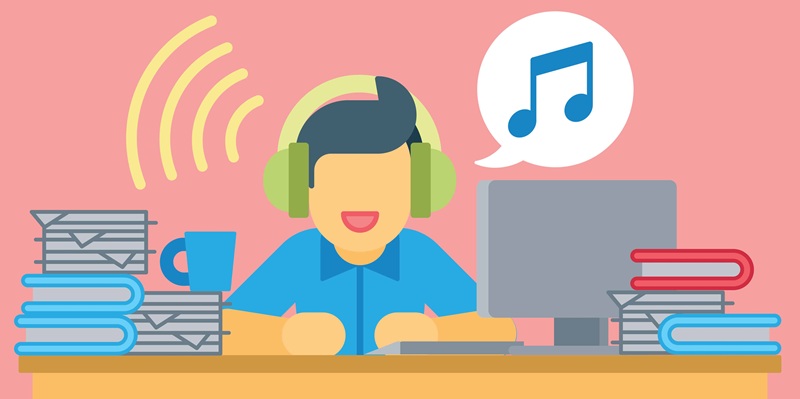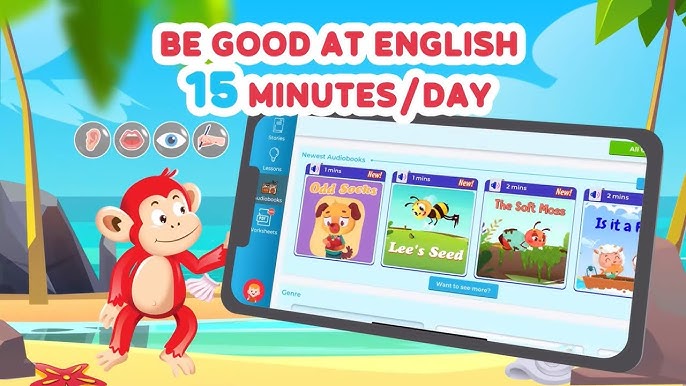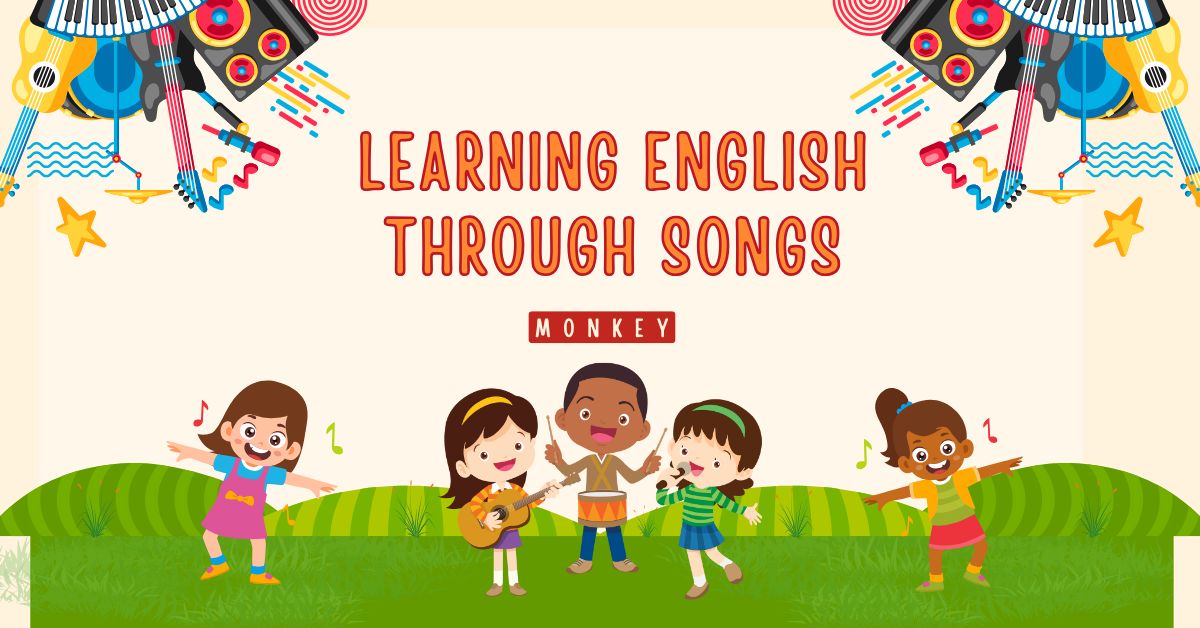Learning English through songs is a fun and effective method, especially suitable for young children. Through lively melodies and simple vocabulary, children not only absorb the language naturally but also develop positive learning habits early on. So, how can we maximize the effectiveness of learning English through songs for children?
Benefits of Learning English Through Songs for Young Children
Learning English through songs is not just a form of entertainment, but also an effective educational method, especially for preschool and elementary-aged children. Here are some of the key benefits of this approach:
-
Easier Vocabulary and Grammar Retention: English children's songs often use simple words and repetitive phrases, which help children naturally memorize vocabulary and sentence structures.
-
Improved Pronunciation and Intonation: Children hear proper pronunciation from native speakers through songs, which helps them mimic the sounds and develop correct pronunciation and intonation habits.
-
Stimulating Interest and Love for English: Music creates a joyful atmosphere, making children feel that learning English is not a burden, but rather an enjoyable activity.
-
Natural Listening Skill Development: Regularly listening to songs helps children familiarize themselves with English sounds, improving their listening comprehension without the need for dry drills.
-
Enhanced Reflexes and Long-Term Retention: The combination of lyrics, melody, and physical movement (if there are demonstrations) helps children respond to language more quickly and remember lessons for a longer period.

Criteria for Choosing Appropriate English Songs for Children
To make learning English through songs effective, choosing songs that are suitable for the child's age and ability to absorb the language is crucial. Here are some criteria that parents and teachers should consider:
-
Cheerful, Easy-to-Listen Melodies: Songs with lively rhythms and easy-to-follow melodies will engage children and make it easier for them to participate.
-
Simple Vocabulary, Repeated Often: The lyrics should use basic and familiar vocabulary with frequent repetition to help reinforce memory effectively.
-
Content Related to Daily Life: Songs should focus on topics that children are familiar with, such as the alphabet, counting numbers, animals, colors, family, objects, etc., making it easier for children to understand and apply them in real life.
-
Clear Pronunciation and Moderate Speed: Choose songs with clear pronunciation and a moderate tempo, so children can easily listen and mimic the sounds.
-
Accompanied by Illustrations or Videos: Using lively images or animated videos will help children understand the song’s content, while also enhancing memory and associations.
-
Age-Appropriate: Avoid songs with overly complex content or expressions. For younger children, opt for short songs with rhyming patterns that are easy to sing along with.

How to Effectively Apply Learning English Through Songs for Children
Learning English through songs is a fantastic method, but to achieve real results, parents and teachers need to apply it correctly. Here are some simple yet proven ways to help young children absorb the language naturally, joyfully, and sustainably:
1. Let Your Child Listen to Songs Daily in a Natural Way
Making listening to English songs a daily habit is the first step to helping your child become comfortable with the new language. There's no need to make your child sit down and study seriously or memorize the lyrics. Instead, play music while your child is playing with toys, eating, or even before bedtime. Repeating this daily will help your child become familiar with the melody, phonetics, and vocabulary unconsciously.
Regular listening will create an ideal "language environment," much like how children learn their native language. Even if your child doesn't fully understand the meaning, they will gradually remember words and pronounce them correctly through frequent listening.
2. Sing Along with Your Child to Encourage Interaction and Bonding
Children learn better when they interact directly with adults, especially their parents. Singing together not only improves memory but also creates a sense of safety and fun while learning.
Singing together helps children naturally grasp intonation and sentence breaks in English. If your child is shy, parents can start by singing first, then encourage the child to join in. It's not important to sing perfectly, as long as the child participates.

3. Incorporate Actions or Illustrative Games
Music combined with movement is a perfect match for the holistic development of children. With songs that include actions like "Head, Shoulders, Knees and Toes" or "If You're Happy and You Know It," children can learn body parts while practicing listening – understanding – acting.
When the body moves according to the song's content, the child's brain can easily retain information through the connection of language, sound, and movement. You can also turn the lesson into a game by challenging the child to follow the movements or see who remembers the actions faster.
4. Explain Vocabulary and Song Content Lightly and Joyfully
There's no need to explain everything in detail like in a classroom. After each song, you can pick out a few key words, images, or simple sentences to explain to the child. Use toys, pictures, or even actions to help the child quickly understand and remember.
For example: After listening to "The Wheels on the Bus," you can point to a toy bus, repeat the word "bus," and ask: "Do you remember what the wheels do in the song?" This gentle questioning will help the child remember and respond more quickly.
5. Use Animated Videos or Lively Images to Support Learning
For young children, visuals play a crucial role in knowledge acquisition. Animated videos illustrating the songs help children quickly understand the content, associate vocabulary with specific images, and increase their interest in learning.
For instance, the song "Old MacDonald Had a Farm," with animated animals, not only teaches children words like cow, pig, and duck but also helps them remember the corresponding sounds of each animal through sound effects in the video.

6. Review Old Songs Before Learning New Ones
Young children have limited short-term memory, so reviewing old songs is extremely important to help vocabulary and language structures stick in long-term memory. Before introducing a new song, play the ones the child has already heard or enjoys.
You can turn reviewing into a fun game, for example: "Mom will play the music, can you guess what song this is?" or "Do you remember which song had a cat in it?" This will boost the child's confidence and encourage them to be more proactive in remembering.
Suggested English Songs for Children
Choosing the right songs is a key factor in helping children learn English effectively through music. Below are some popular and beloved English songs in Thailand that are suitable for young children:
"Moodeng Moodeng" – The Official Song of the Hippo Moo Deng
This is the official song about Moo Deng, a famous pygmy hippopotamus in Thailand. The song has a lively melody with simple lyrics like "Moo Deng Moo Deng, boing boing boing / Mommy mommy, play with me," and is released in four languages: Thai, English, Chinese, and Japanese. The music video features adorable images of Moo Deng, which attract the attention of both children and parents.
"ABC Song" – The English Alphabet Song
The "ABC Song" is a classic song that helps children easily learn the English alphabet. Its familiar melody and simple lyrics help children naturally memorize the letters. This song is popular not only in Thailand but also worldwide.
"Baby Shark" – The Fun Song About the Shark Family
"Baby Shark" is a global phenomenon with its catchy melody and adorable accompanying actions. The song tells the story of a shark family and has become a staple in many children's playlists in Thailand.
"If You're Happy and You Know It" – The Fun Interactive Song
This song encourages children to participate by clapping their hands, stomping their feet, and performing other actions as the lyrics suggest. It's a great way to combine learning English with physical movement, helping children develop both language and motor skills.
"Five Little Ducks" – The Counting Song About Duck Family
"Five Little Ducks" is a cute song that helps children count from 1 to 5 through the story of little ducklings. The gentle melody and repetitive lyrics make it easy for children to naturally remember the numbers.
Enhancing English Learning Effectiveness for Children with Monkey Junior
To improve the effectiveness of English learning for children, in addition to having them watch song videos, parents can use Monkey Junior – a comprehensive English learning app for children aged 0 to 11 years old.
Monkey Junior is an English learning application developed by Egroup Education Joint Stock Company, launched in 2014. The app has helped more than 8 million children worldwide learn English naturally and effectively. Monkey Junior is designed based on early education methods, suitable for children aged 0-11, and helps children develop all four skills: Listening, Speaking, Reading, and Writing.

Why Choose Monkey Junior?
-
Clear Learning Path: The app provides a structured learning path, helping children develop all four skills: Listening, Speaking, Reading, and Writing.
-
Comprehensive Development: Using early education methods such as Glenn Doman, learning through games, interactive stories, AI, etc., helps stimulate children’s natural language thinking.
-
Cross-Platform Support: Can be used on multiple devices such as smartphones, tablets, and desktop computers.
-
Learn Anytime, Anywhere: The app supports offline learning, helping children study effectively even without an internet connection.
-
Suitable for All Ages: Monkey Junior designs courses that are suitable for each child's age and developmental needs.
-
Clear Learning Reports: Monkey Junior offers a learning report feature for parents, making it easier to track their child's progress and adjust the learning plan accordingly.
Currently, Monkey Junior is offering a discount of up to 40% for new registrations. This is a great opportunity for your child to start their English learning journey in a fun and effective way. Register now to receive the discount.
Some Tips for Teaching Children English through Songs
Learning English through songs is an enjoyable and accessible method for young children. However, to ensure real effectiveness, parents should keep the following important points in mind:
-
Choose songs with simple vocabulary, slow melodies, and content that is appropriate for the child's age and ability.
-
Prioritize songs with vivid illustrations to enhance connection and memorization.
-
Let children listen to the same song repeatedly to create familiarity and help them better memorize new words.
-
Encourage children to sing along and imitate the pronunciation in the song to practice speaking skills.
-
Combine songs with physical activities like dancing or mimicking actions to increase excitement and improve retention.
-
After listening, engage in a conversation with the child about the song's content, asking questions to help them understand it better.
-
Avoid forcing children to memorize the lyrics. Instead, allow them to absorb it naturally through repetition.
-
Ensure that listening time is balanced with other learning activities to avoid over-dependence on devices.
-
Maintain a daily habit of listening to English songs to develop a natural language reflex.
-
Diversify the songs according to themes (counting, colors, animals, etc.) to expand the child’s vocabulary.
Conclusion
Learning English through songs not only helps children approach the language in a natural way but also brings joy and excitement during the learning process. With the right method and the support of parents, learning will become lighter and more effective each day.




.png)





